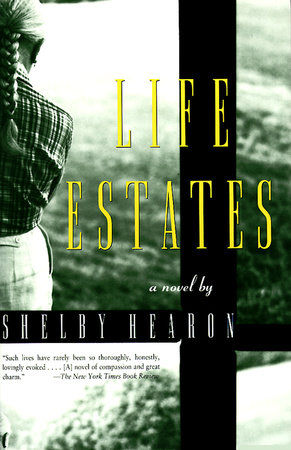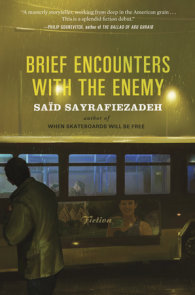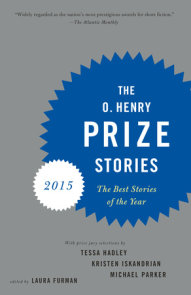READERS GUIDE
The questions, discussion topics, and author biography that follow are intended to enhance your group’s reading of Shelby Hearon’s Life Estates. We hope they will provide you with new ways of looking at–and talking about–a book by an author whose work has been diversely compared to both the contemporary Laurie Colwin and the timeless Colette. Life Estates is a novel about marriage and mortality; about friendship and feminism; about love and loss; and about two women who believe they have lived parallel lives, but come to find out how wrong they really are.Introduction
Sarah and Harriet, friends since boarding school days, have gone through the rites of passage simultaneously: proms, marriage, childbirth, young motherhood–they even both had boys followed by girls. Now aged fifty-five, they have become widowed in the same year, and the differences that have lain dormant between them all this time finally begin to surface. Sarah, relieved that her married days are behind her, looks to the future, seeking out a life of serenity and self-reliance through communion with nature, small-business proprietorship, and her relationship with the mature Will Perry. Harriet, firmly entrenched in the past, seeks comfort from a younger man as refuge from the illness that threatens her very life and the coldness of the indifferent world that confronts a woman unprepared to be alone.In the course of the novel, both women will come face to face with the meaning of the past–with all of its resonant force. Life Estates is a novel about the way we see–and fail to see–those we love; it is about missed connections; it is about the inability to ever truly know another human being. But Life Estates is also about people learning: people learning to have healthy relationships; people learning to stand alone when their relationships fail them; people learning to accept themselves as valid human beings in their own right. As such, this occasionally witty, often moving, always thought-provoking book stands as a reaffirmation of the very energy of life itself.
Questions and Topics for Discussion
1. The story is related entirely from Sarah’s point of view. How does this affect the perspective of the story? How might the narrative have been different had the reader been allowed access to other characters’ thought processes?
2. It is easy to conceive of Sarah being an effective proprietor of her own business. Based on this, the argument can be made that this story could have been told without the supporting character of Katie. What function, then, do you believe Hearon intended Katie to serve?
3. At first glance, it would appear that Katie’s and Harriet’s mutual dislike is a logical by-product of their completely divergent personalities. By scratching beneath the surface, how does their seemingly natural antipathy for each other speak to you about the nature of women’s friendships?
4. Harriet and Sarah deal with death quite differently in terms of the ways in which they redecorate their husbands’ former bedrooms. Harriet transforms Knox’s room into something "you won’t recognize" [p. 59], while Sarah restores Nolan’s with museum-like precision into a "memorial" [p. 156]. Why do you think they feel an impetus to change the rooms right away? Would it be healthier to deal with what was, rather than leaping instantly ahead to an altered future? Based on what you have observed in your own lives, is there a discernible difference between "coping with it" and "getting on with it"?
5. Giving voice to her unconventional views on the subject of marital infidelity, Sarah says, "Why be beholden twice?" [p. 90]. What does she mean by this ambiguous statement?
6. Sarah’s and Harriet’s life philosophies seem so different. Sarah tends to lean towards solitude as a source of comfort, while Harriet evinces a marked reliance on the bolstering effects of community. Further, Sarah is poised for the future in her relationship with a man fifteen years her senior, while Harriet, ironically, is mired in the past in her relationship with a man exactly fifteen years her junior. What is Hearon trying to reveal about her characters? How do you account for their ongoing friendship? Is it mere force of habit or does each fulfill a need in the other, and if so, what?
7. Do you think Harriet was always self-centered and jealous, or do you feel that her illness has heightened these traits? What kind of wife do you imagine she was for Knox? What would this woman have been like to have as a mother or a daughter?
8. Hearon conspicuously uses the word "covenant" twice in the course of the novel. Once when referring to Sarah’s personal concept of friendship and marriage [p. 203], and later in regard to death [p. 216]. Is she trying to tell the reader something, and if so, what? Further, why do you think she chose the name of a legal document for the title of a novel about relationships?
9. Why does the reader not meet Pammy or David until after Harriet has died? Are your impressions of them in accord with Harriet’s presentation of them?
10. Sarah’s usual coping style is one of solitude and reflection, yet she feels an impulse to notify the whole world of Harriet’s death. What does her action symbolize?
11. Concern for physical safety is a matter of paramount importance to the aging members of The Birthday Club: witness the fact that they all carry loaded pistols in their purses. This fear is paralleled in the world outside of the novel. What role does tabloid journalism play in fostering this? Are people simply running scared, and if so, what features make the aging such easy prey for this?
12. Sarah begins the novel: "Thinking perhaps that a close friend, after all, was someone who had gone down the same road with you…" [p. 6]. How does Sarah’s conception of friendship evolve as the story unfolds? By novel’s end, what is her concluding definition?
13. Katie observes: "All of us are defined by how much husband we’ve got" [p. 9]. Sarah, Harriet, and Katie are all middle-aged, and therefore their perceptions are perhaps colored by their generation. Do you believe that the presence or absence of a man in a woman’s life is still the defining yardstick of her social identity? If so, can you envision a time in the near future when this state of affairs will change, and how do you imagine such a change will be effected?
14. Betrayal is one of the novel’s repeated themes. For example, Harriet feels betrayed by Knox, Pammy, Sarah–even by her own body. Is the act of betrayal consistently perceived as bad behavior in the novel, or is it at times justified? What is the difference between perceived betrayal and actual betrayal?
15. Sarah says of sex: "I had the conviction that most women wanted a lot more sex than they got" [p. 196]. Why did Sarah reach this conclusion? To what extent do you feel that Sarah’s conclusion can be practically applied to the world outside of the novel?
16. Growing up, Sarah envied Harriet’s schoolgirl letters home, but "Now they seemed to me forced; cheerful missives never quite reaching their mark" [p. 72]. What caused Sarah to change her opinion?
17. Sarah wonders how the urgent passion of the early days with Nolan could have dissipated [p. 34]. What is the answer to her question? How do married couples get from point A to point B? Are dissatisfaction and ennui inherent in marriage–as Sarah seems to believe–or is the truth something different? Of marriage, Sarah remarks: "How marriage did compartmentalize. How it did foster gender-distinct, function-distinct, affection-distinct divisions" [p. 169]. Do you feel that this statement still rings true, or is it only accurate when describing the experiences of Sarah’s and previous generations? Has marriage always been what it is today?
18. Sarah and Harriet deal with members of their immediate families differently. Sarah is horrified that her daughter has so many children, Harriet that hers has none. What does this displeasure concerning their daughters’ choices and the ways in which they make that displeasure manifest tell you about what they are like as human beings? Similarly, what does the way in which each one relates to her own mother reveal to you about them?
19. The theme of selfish love versus mature love is a major issue in this novel. What do you believe were the determining factors in Sarah’s past that caused her to choose the jealous and needy Nolan and Harriet? What changes has she undergone that have enabled her to accept the less judgmental and more open Will Perry? What is the significance of the fact that Will Perry fulfills Sarah’s shower fantasy while Nolan was unable to?
20. The book illustrates many versions of people functioning in the absence of a live-in significant other. Doll has her house with its empty bedrooms and graveyard parties, Edith has her expeditions and spiders, and Will Perry has his medical work, just to name a few. Of all of the styles presented, which characters impress you as being the most effective, or healthy, in their quest to live a well-balanced life in their own right?
21. Concerning her husband, Harriet wonders, "How was it possible, I thought, to live with someone for thirty-two years and still be a total stranger" [p. 66]. She is further disturbed–faced with Sarah’s startling revelations concerning secrets from her past–to learn that she doesn’t know her old friend any better than she did her husband. Is Harriet just particularly dense, or is it ever possible to truly know another person, warts and all, no matter how long the relationship has gone on?
22. There are many recurring themes in the novel: the solitary life, missed communications, marriage, friendship, betrayal, aging, and death, just to name a few. Why are there so many themes that recur? Do you feel that this was done deliberately, and if so, what was Hearon’s intention?
About this Author
Shelby Hearon was born in Marion, Kentucky; lived for many years in Texas and New York; and now makes her home in Burlington, Vermont. She is the author of thirteen novels, including Hug Dancing and Owning Jolene, which won an American Academy and Institute of Arts and Letters Literature Award and will soon be released as a film.She has received National Endowment for the Arts and John Simon Guggenheim fellowships for fiction, an Ingram Merrill grant, and has twice won the Texas Institute of Letters fiction award.
Shelby Hearon has taught in numerous writing programs, including those of the University of Houston, the University of California at Irvine, the University of Illinois at Chicago, and the University of Miami, and presently she teaches at at the University of Massachusetts at Amherst.






















